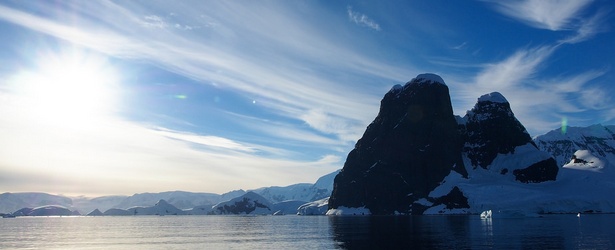Research provides new theory on cause of ice age 2.6 million years ago

New research published today, Friday, June 27, 2014, in the journal Nature Scientific Reports has provided a major new theory on the cause of the ice age that covered large parts of the Northern Hemisphere 2.6 million years ago.
The study, co-authored by Dr Thomas Stevens, from the Department of Geography at Royal Holloway, University of London, found a previously unknown mechanism by which the joining of North and South America changed the salinity of the Pacific Ocean and caused major ice sheet growth across the Northern Hemisphere.
The change in salinity encouraged sea ice to form which in turn created a change in wind patterns, leading to intensified monsoons. These provided moisture that caused an increase in snowfall and the growth of major ice sheets, some of which reached 3km thick.
The team of researchers analysed deposits of wind-blown dust called red clay that accumulated between six million and two and a half million years ago in north central China, adjacent to the Tibetan plateau, and used them to reconstruct changing monsoon precipitation and temperature.
"Until now, the cause of the Quaternary ice age had been a hotly debated topic", said Dr Stevens. "Our findings suggest a significant link between ice sheet growth, the monsoon and the closing of the Panama Seaway, as North and South America drifted closer together. This provides us with a major new theory on the origins of the ice age, and ultimately our current climate system."
Surprisingly, the researchers found there was a strengthening of the monsoon during global cooling, instead of the intense rainfall normally associated with warmer climates.
Dr Stevens added: "This led us to discover a previously unknown interaction between plate tectonic movements in the Americas and dramatic changes in global temperature. The intensified monsoons created a positive feedback cycle, promoting more global cooling, more sea ice and even stronger precipitation, culminating in the spread of huge glaciers across the Northern Hemisphere."
Source: Royal Holloway, University of London
Reference:
"Pacific freshening drives Pliocene cooling and Asian monsoon intensification" – Junsheng Nie, Thomas Stevens, Yougui Song, John W. King, Rui Zhang, Shunchuan Ji, Lisha Gong & Danielle Cares – Scientific Reports 4, Article number: 5474 – doi:10.1038/srep05474
Abstract:
"The monsoon is a fundamental component of Earth's climate. The Pliocene warm period is characterized by long-term global cooling yet concurrent monsoon dynamics are poorly known. Here we present the first fully quantified and calibrated reconstructions of separate Pliocene air temperature and East Asian summer monsoon precipitation histories on the Chinese Loess Plateau through joint analysis of loess/red clay magnetic parameters with different sensitivities to air temperature and precipitation. East Asian summer monsoon precipitation shows an intensified trend, paradoxically at the same time that climate cooled. We propose a hitherto unrecognized feedback where persistently intensified East Asian summer monsoon during the late Pliocene, triggered by the gradual closure of the Panama Seaway, reinforced late Pliocene Pacific freshening, sea-ice development and ice volume increase, culminating in initiation of the extensive Northern Hemisphere glaciations of the Quaternary Ice Age. This feedback mechanism represents a fundamental reinterpretation of the origin of the Quaternary glaciations and the impact of the monsoon."
Featured image: Antarctica by http://www.flickr.com/photos/10978010@N07/12437173814

Commenting rules and guidelines
We value the thoughts and opinions of our readers and welcome healthy discussions on our website. In order to maintain a respectful and positive community, we ask that all commenters follow these rules:
We reserve the right to remove any comments that violate these rules. By commenting on our website, you agree to abide by these guidelines. Thank you for helping to create a positive and welcoming environment for all.